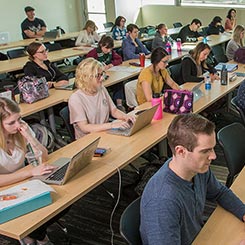Keeping content current is critical for providing accurate and timely information and services to your audience. One way to build trust with your visitors is to implement a content review process. It takes time, but it is critical to your credibility.
Visitors expect and deserve accurate information on your website, and regular reviews will help keep your content error free. Administrative organization and leadership are key elements of a reliable review process.
As an academic institution, it is logical that misspellings and grammatical errors be avoided at all costs.
Step 1: Build a Solid Foundation
Gaining support from upper level management will ensure that the web review process is a priority of the department or organization. This will help with leveraging "buy-in" from co-workers.
Web coordinators manage the content review for their office or department. This person works with Web Services to ensure that updated information is presented. It is the individual pages in your area that will make up the collective sum of your website.
Step 2 : Develop Criteria for the Review
- Functionality
- Do all links work, and go to the expected page?
- Can visitors successfully navigate their task from start to finish?
- Quality
- Is the page written in plain language?
- Are there errors in spelling or grammar?
- Does the page duplicate information found elsewhere on your site, or another website?
- Does the page follow your institution's goals and plans?
Step 3: Develop a Schedule
All content on your web pages should be reviewed at least four times per year, at a minimum. Place this review on your yearly office calendar. A report out on the review should be a part of the employees yearly evaluation.
Send your web coordinators a list of pages (URLs) before each review cycle, so they know exactly which pages they are responsible for reviewing.
Step 4: Follow Up
Inform managers and web coordinators when their updates are posted. Thank your team for their help!






